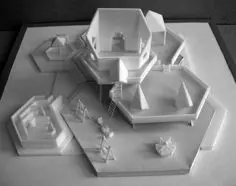The various types of architectural models, which bring out the final form of the project allowing deficiencies and what needs to be done to be easily seen, are made by experienced architects using different techniques. It is possible to create a suitable model design for each project, which guides application engineers and contractors throughout the construction phase of the project.
Experienced and competent architects take into account all the details desired by the client to design the architectural model with appropriate methods and materials. For a successful model design, it is crucial to understand and read the project correctly. Then, scale and technique must be determined, and three-dimensional work must be done in accordance with the rules.
The quality of the material used during the construction of the terrain on which the model will be mounted, the body, and the facades of the model is an important consideration for the durability of the model. In general, robust and solid materials are preferred for model construction, such as wood, PVC panel, ABS, acrylic, and cork panels, among others. Lighter materials such as foam and cardboard are preferred in places where their use is preferred.
After the material selection is decided, the assembly phase of the model begins, and the finished structures are mounted on the selected base. Then the chosen landscaping is implemented, and everything, including plants and trees, must be done as realistically as possible. Finally, architectural model design is completed with light, sound, and water effects through an automation software system.
Importance of Architectural Model Design
Architectural models are extremely important for promoting and selling the project. The fact that customers can see the final form of the project and make a decision facilitates the sale of the project. For this reason, during the project implementation phase, model presentations are organized to inform about the project.
Architectural models also allow for correcting errors that may go unnoticed during the design of the project before transitioning to the implementation phase. Errors identified in the project during the construction of the model are corrected to create a more perfect work. For this reason, project owners have professional models designed by companies specializing in architectural model design. Additionally, architectural models designed for the project are also important for calculating and determining the cost of all activities to be carried out within the project framework, and for developing a sales policy accordingly.





